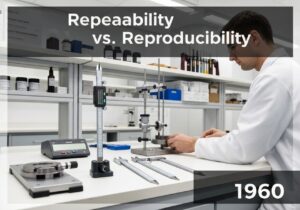To determine how a system performs under a significant load for an extended period.
- 方法: 人体工程学
Endurance Testing

Endurance Testing
- 持续改进, 性能跟踪, 流程改进, 质量保证, 质量控制, 质量管理, 风险管理, 测试方法
目标
如何使用
- Subjects a system to a high, sustained load to identify issues like memory leaks, performance degradation, or other problems that may not be apparent in shorter tests.
优点
- Ensures long-term stability and reliability; Identifies performance bottlenecks under sustained use.
缺点
- Time-consuming and resource-intensive; May require specialized tools and environments.
类别
- 质量, 风险管理
最适合:
- Testing the long-term stability of mission-critical systems and applications.
Endurance Testing plays a significant role in various industries, particularly those where software stability and reliability are of utmost importance, such as aerospace, telecommunications, finance, and healthcare. This technique is commonly employed during the late stages of product development, especially during system validation phases, where products are subjected to prolonged operational conditions that mirror real-world usage scenarios. Participants typically include software engineers, quality assurance teams, and system architects, who collaborate to establish the testing environment and parameters. An illustrative application can be found in web services and online banking platforms, where systems must handle high volumes of simultaneous transactions over extended periods without failure. Endurance Testing aids in identifying issues like memory leaks, which may only surface after several hours of continuous operation, and it can also reveal performance bottlenecks that emerge under sustained workloads, guiding necessary optimizations prior to deployment. Additional benefits include increasing user confidence by demonstrating the robustness of the system in handling long-term tasks, minimizing the risk of system failures that could lead to financial losses or service interruptions, and ensuring compliance with industry standards and regulations. Organizations may also document these tests to validate their systems against Service Level Agreements (SLAs), ultimately enhancing customer satisfaction and trust in their offerings.
该方法的关键步骤
- Define the performance metrics and thresholds for the application or system.
- Design the test scenarios simulating realistic user behavior and workloads.
- Implement the testing environment, ensuring all system components are represented.
- Execute the endurance test over a prolonged period, maintaining the defined load.
- Monitor system performance continuously, focusing on memory usage, response times, and stability.
- Identify points of failure, resource exhaustion, and any degradation in service quality.
- Iterate on the test design, enhancing scenarios based on findings and retesting as necessary.
专业提示
- Implement load simulation that closely resembles real-world usage patterns to accurately assess system behavior.
- Incorporate automated monitoring tools for tracking resource utilization and application metrics throughout the test duration.
- Use incremental load testing, gradually increasing the load while monitoring system responses to reveal thresholds and breaking points.
历史背景
1950
1950
1960
1960
1960
1960
1963
1950
1950
1959-11
1960
1960
1960
1961
1968
(如果日期不详或不相关,例如 "流体力学",则对其显著出现的时间作了四舍五入的估计)。














相关文章
蒙特卡罗模拟
基于模型的测试
型号检查
混合方法研究
防错(Poka-Yoke)
任务简介测试